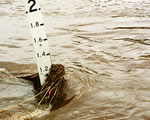 Go to main content
Go to main content
Archive Website of the UK government
Please note that this website has a UK government accesskeys system.
Main menu
Page menu
Home and community

What to do after a flood

Clearing up after a flood can be rather unpleasant. However, there are practical steps you can take to make the process easier. Find out how to clear up after a flood, safely and effectively, and also deal with your flood insurance claim.
Clearing up after a flood
The most important thing after a flood is finding out if it is safe to return to your property. If you were evacuated from your property because of flooding, you will be told when it’s safe for you to return. This could be by someone from:
- from the emergency services
- your insurance company
- local council
- your water and sewage company
Protecting yourself from contamination
Floodwater can be contaminated with sewage, chemicals and animal waste.
When clearing up, you should:
- wear protective clothing, like rubber gloves, waterproof jacket and trousers
- use a face mask
- wash your hands with disinfectant if you come into contact with floodwater, or handle anything that has been in contact with floodwater
If you start to feel unwell, call NHS Direct on 0845 4647 or contact your GP.
Getting rid of water after a flood
When clearing up, shovel mud away from both sides of the wall to stop pressure building up on one side.
Wait until the water levels are lower outside your property than in before getting rid of it using a pump or bucket. You can hire or buy a pump and generator from a DIY shop. Make sure you put the generator outside to avoid carbon monoxide poisoning from the exhaust.
Checking your electricity supply and electrical appliances
After a flood, you should check that the electricity has been switched off at the mains. If you are not sure that it has been switched off, you should get a qualified person to do this. You should not touch sources of electricity while standing in floodwater. You should also make sure any electrical appliance that’s been in contact with floodwater is checked out by a qualified electrician.
Making an insurance claim after a flood
In general, insurance cover is available for most properties in the UK.
You should check your buildings and contents insurance to:
- make sure you’re covered for flooding
- find out if your flood-damaged belongings will be replaced with new ones (a ‘new for old’ policy)
When you call the insurance company, ask:
- how long it will be before the loss adjuster visits
- if they will organise and pay for cleaning and redecorating your home
- if they will help pay for repairs that will reduce potential flood damage and therefore reduce the costs if it happens again
You should make your own record of the flood damage. You can do this by taking photos, notes or making videos. You should also make sure you keep a record of everything related to your claim (letters, receipts and telephone calls to and from the insurance company).
If you rent, contact your landlord to check what buildings insurance is in place.
If you do not have insurance, your local council should be able to provide information on hardship grants or charities that may be able to help you.
Doing repair work on your property after a flood
Make sure you talk to your insurer before undertaking any work to find out what work can be paid for under your policy before starting any repairs. Your insurer will usually pay for 'like-for-like' repairs, restoring your home to a similar state to before the flood. You are likely to have to pay for any work beyond like-for-like repairs yourself. The cost of making your home better able to deal with flooding is likely to be a lot less than the cost of clearing up after flood.
Alterations you may want to consider are:
- laying ceramic tiles on the ground floor
- using rugs instead of fitted carpets
- raising the height of electrical sockets to at least 1.5 metres above ground floor level
- fitting stainless steel, plastic or solid wood kitchens instead of chipboard ones
- putting main parts of a heating or ventilation system, like a boiler, upstairs or raised well above the ground floor
- fitting non-return valves to all drains and water inlet pipes, which only let water flow one way
- replacing wooden window frames and doors with man-made ones like UPVC - they are easier to clean
 Facebook
Facebook Twitter
Twitter StumbleUpon
StumbleUpon Delicious
Delicious Reddit
Reddit
